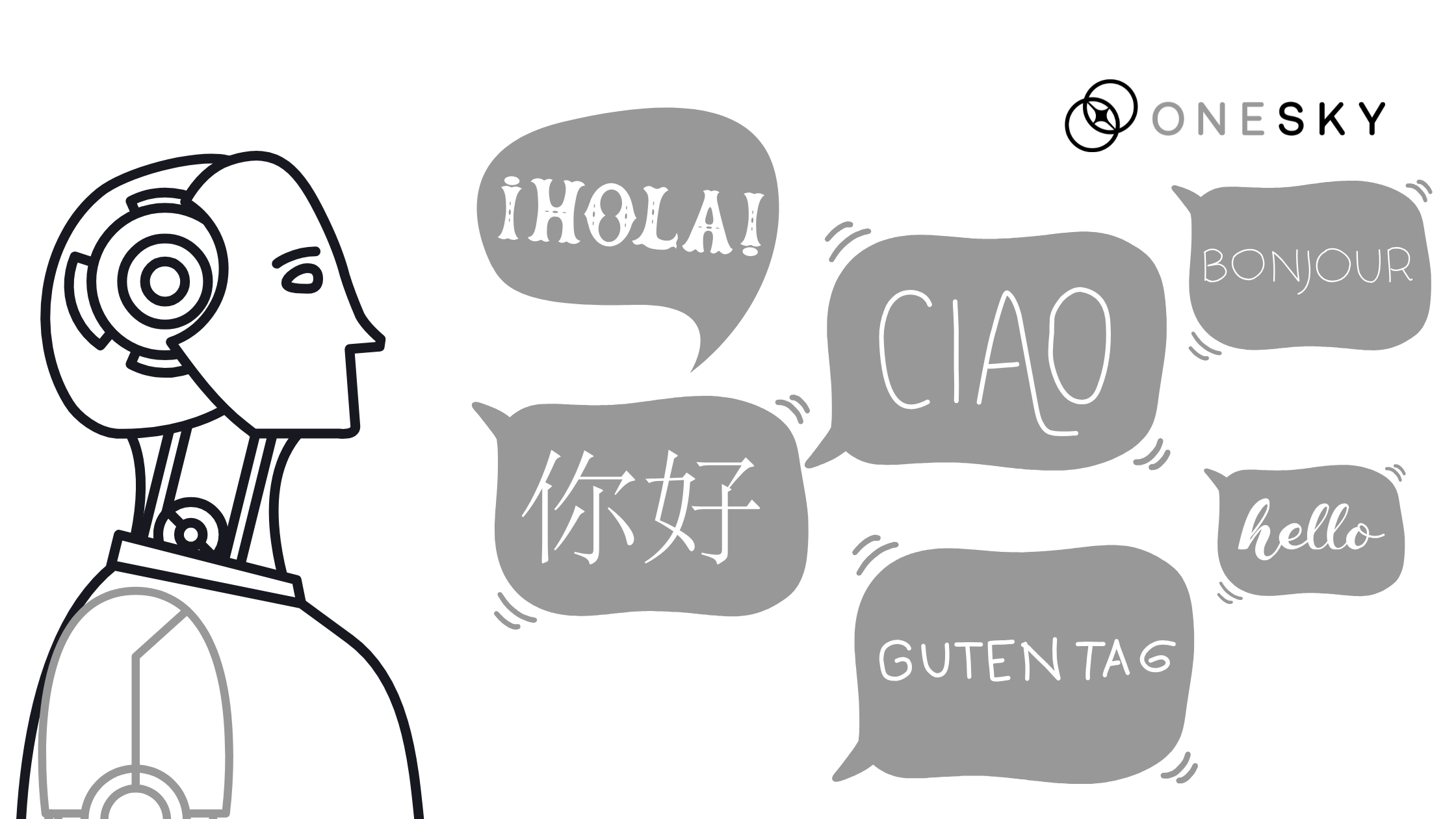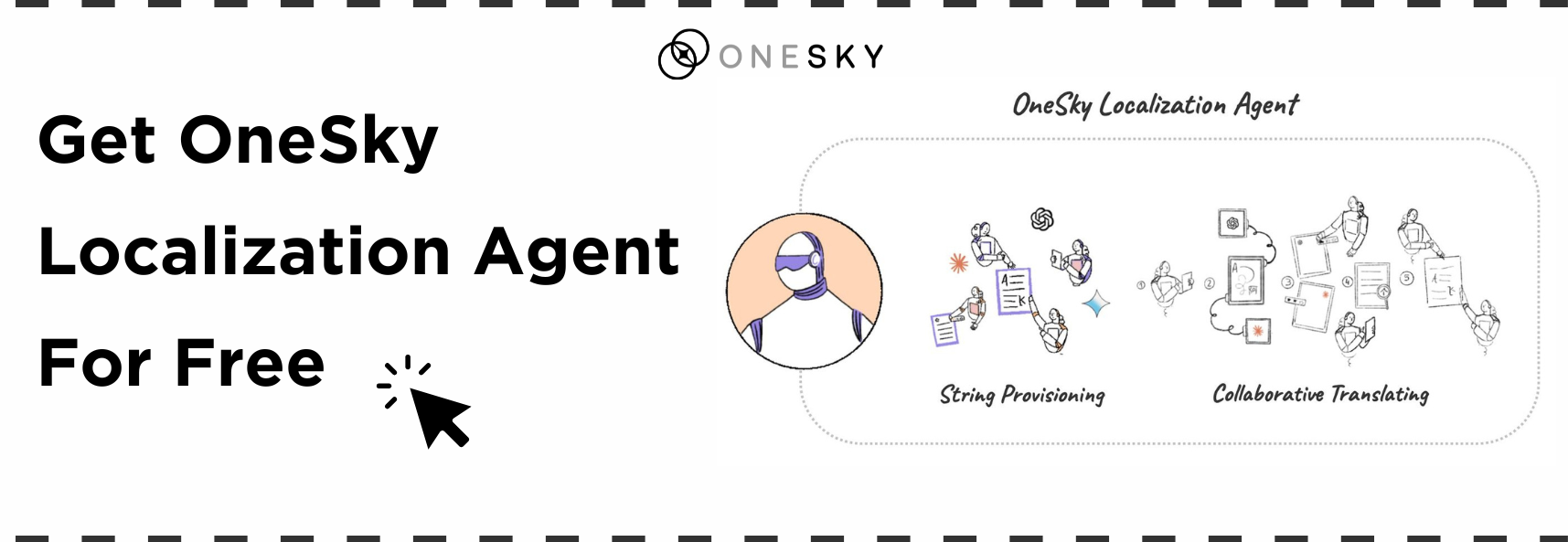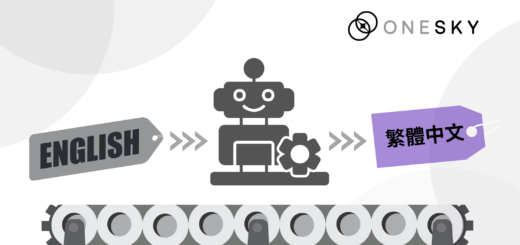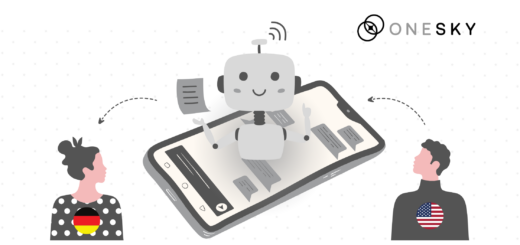ChatGPT Translation: Your Global Gateway
In today’s fast-paced digital age, the demand for effective translation solutions has surged, driven by the globalization of markets and the need for businesses to communicate across linguistic divides. This need is particularly acute in the software and SaaS sectors, where products must be localized to meet the diverse cultural and linguistic expectations of global customers in French, Spanish, German, Chinese, Japanese, Italian, and Portuguese markets. With the help of Chat GPT content translation services, a cutting-edge application of OpenAI’s Generative Pre-trained Transformer technology powered by Chat GPT-4, your business can seamlessly tackle the complex challenge of language translation.
If you have a software or SaaS company, you’ll face unique hurdles when localizing your offerings. While ensuring that your products perform flawlessly across different operating systems and devices, you must also adapt your content to resonate culturally in various regions. This includes translated texts and localizing images, workflows, and user interactions to align with local customs and regulations. According to a report by CSA Research, companies that invest in translation are 1.5 times more likely to observe an increase in revenue.
In this article, we’ll see how Chat GPT translation leverages the power of Artificial Intelligence (AI) to provide nuanced, context-aware translations that go beyond traditional machine translation tools like Google Translate. We’ll explore the integration of Chat GPT with translation workflows, discuss how to overcome common AI translation challenges, and understand why OneSky is the ideal partner for leveraging this technology to unlock your business’s global potential.
The Evolution of Translation: Enter Chat GPT
The landscape of language translation has been profoundly transformed by the advent of advanced AI tools, notably through the development of Chat GPT by OpenAI. Chat GPT (Generative Pre-trained Transformer), also known as a large language model, represents a significant leap in machine learning and natural language processing capabilities. This technology is not just another language model; it’s a sophisticated AI chatbot designed to understand and generate human-like text based on the context of the conversation.
Chat GPT is significant in the field of AI-driven translation because it leverages deep learning techniques to provide a nuanced understanding of languages. Unlike traditional translation tools that often rely on direct word-for-word substitution, Chat GPT comprehends the intent and tone behind the text, making it capable of producing more accurate and contextually relevant translations. This is particularly crucial in the software and SaaS industries, where conveying the correct functionality and tone can significantly affect user experience and market acceptance.
One of the revolutionary aspects of Chat GPT models in translation is their ability to learn from a vast dataset of multiple languages, which enables them to improve continually over time. This learning capability allows Chat GPT to offer real-time translation, enhancing communication in scenarios ranging from customer support to real-time collaboration across different languages.
By integrating Chat GPT into translation workflows, your business can overcome traditional barriers to machine translation. The enhanced accuracy and speed with which these models operate can significantly reduce the time and resources needed for localizing content across different languages, thereby streamlining the go-to-market strategies for global products.
Chat GPT’s advanced understanding and continuous improvement model represents a transformative approach to translation that meets the dynamic needs of today’s global businesses, making it an indispensable tool for language translation services.
Integrating Chat GPT into Translation Workflows
Integrating Chat GPT models into existing translation management systems marks a significant shift towards automation in software translation services, streamlining operations and significantly enhancing efficiency. The integration process typically follows a structured approach that ensures Chat GPT seamlessly interacts with current systems to automate and refine the translation process, easily accessible via Windows, Android, and iOS platforms, ensuring a wide range of compatibility.
Step-by-Step Integration Process
- Assessment and Planning: Initially, it’s crucial to assess the current translation workflow to identify areas where Chat GPT can add the most value. This might involve reviewing the existing translation tools and systems used for managing translation tasks.
- API Integration: Chat GPT can be integrated into existing systems through APIs that connect the AI model directly with translation management software. This integration allows Chat GPT to access the necessary data to perform translations and adapt to specific language model requirements.
- Training and Customization: Chat GPT is trained on a specialized dataset pertinent to the specific industry or sector’s jargon and linguistic nuances to enhance language translation capabilities. This training includes using DeepL as a benchmark for best translation practices, ensuring that the translations maintain professional standards and are contextually accurate.
- Automation of Repetitive Tasks: Chat GPT excels at automating repetitive translation tasks, such as translating common phrases or instructions across multiple documents or software interfaces, saving significant time and resources. This function is particularly appealing to translation beginners, providing them with a good translator experience without extensive manual effort.
- Quality Assurance and Optimization: Integrating Chat GPT involves continuous monitoring and quality checks to ensure that the translations meet the required standards. Feedback loops are crucial for refining the AI’s performance, ensuring accurate translations, and adjusting to new linguistic patterns.
Benefits of Integration
The integration of Chat GPT into translation workflows offers several advantages, such as:
- Increased Efficiency: Automation of repetitive and time-consuming translation tasks speeds up the localization process, enabling quicker market entry.
- Cost Reduction: Minimizing human intervention for routine translations reduces the cost associated with human translators, especially for large-scale projects.
- Scalability: Chat GPT can scale its operation based on demand, handling fluctuations in translation volume without the need for additional human resources.
- Enhanced Accuracy: With continuous learning capabilities, Chat GPT improves its translations over time, reducing errors and enhancing the output quality.
Overcoming the Challenges of AI Translation
Language can act as a barrier when you’re trying to enter international markets. However, with the right localization strategy, this challenge can be turned into an opportunity.
While AI translation tools like Chat GPT have dramatically advanced the field of machine translation, they are not without their challenges. One of the primary concerns is their ability to handle cultural sensitivity and idiomatic expressions, which are crucial for ensuring that translations are not only accurate but also resonate culturally with the target audience.
Cultural Sensitivity and Idiomatic Expressions
Cultural sensitivity in translation involves more than mere word-to-word translation; it requires an understanding of cultural nuances, local customs, and the emotional tone of the language. Chat GPT, while highly advanced, may still struggle with local idioms, slang, and expressions that do not translate directly. For instance, a common phrase like “Piece of cake” in the English language, which means something very easy, can be misinterpreted in cultures where the idiom does not exist.
Integrating human oversight into the AI translation process is essential to address these nuances. Human translators can review AI-generated translations to ensure they are appropriate and resonate with the cultural context of the source language and target language. This hybrid approach combines the efficiency of Chat GPT with the nuanced understanding of a professional translator, ensuring higher quality and culturally sensitive translations.
Strategies for Enhancing Chat GPT Translations with Human Oversight
- Initial Setup and Training: Before deploying Chat GPT for live translation tasks, it’s crucial to train the model with a dataset that includes varied linguistic and cultural scenarios. This can be augmented with guidelines about cultural nuances and context to prime the AI for better performance.
- Human-in-the-Loop (HILT) System: Implementing a HITL system where translations by Chat GPT are reviewed and refined by human translators can dramatically improve accuracy. This process allows for the correction of errors and the additional cultural nuances that AI alone might miss.
- Continuous Learning and Feedback: Incorporating feedback into the AI model’s learning algorithm can help it learn from its mistakes and improve over time. This is crucial for adapting to new linguistic developments and changes in language use in different cultures.
- Quality Assurance Checks: Regular quality assessments by experienced linguists can help ensure that translations meet the required standards and identify any consistent errors or biases in AI translations.
Why OneSky is Your Ideal Chat GPT Translation Partner
In the dynamic world of global communication, having a robust translation service is crucial if you’re aiming to establish a worldwide presence. OneSky’s platform stands out as an exemplary model, uniquely blending ChatGPT technology with the expertise of human translators to deliver unparalleled translation services that are easily managed through an intuitive translator app.
Unique Combination of AI and Human Expertise
OneSky harnesses the power of ChatGPT for its core AI-driven translation capabilities, ensuring rapid and accurate translations of text across a multitude of languages. However, what truly sets OneSky apart is its integration of human oversight into the translation process. This hybrid model allows every piece of AI-generated translation to be reviewed and refined by professional linguists, ensuring that the final output is not only precise but also culturally and contextually appropriate.
This approach tackles common AI translation challenges, such as idiomatic expressions and cultural nuances. The platform supports a wide range of languages and file formats, making it a versatile choice for businesses in various industries, including tech, e-commerce, and media. OneSky’s cloud-based translation management system is designed to streamline the localization process with AI and automation, making it easier for clients to manage their projects efficiently and effectively.
OneSky’s new AI-powered translation service, reviewed by human linguists, combines AI’s speed and scalability with human expertise’s precision, offering an optimal balance of quality and efficiency.
OneSky’s Translation Management platform is engineered to handle a diverse array of languages and file formats, accommodating the vast needs of global businesses. Whether it’s translating mobile apps, websites, or complex technical documents, OneSky’s platform is equipped to provide high-quality translations tailored to each client’s specific requirements.
Unlock Your Global Potential with OneSky
The journey of achieving global expansion is fraught with challenges, particularly when it involves communicating effectively in diverse markets. The transformative potential of Chat GPT translation technology, exemplified by OneSky, is a game-changer for software and SaaS companies looking to scale globally. By harnessing the power of AI-driven translations enhanced by human expertise, OneSky ensures that your business can communicate accurately and authentically across various cultures and languages.
Choosing OneSky as your translation partner means committing to quality and precision in every aspect of your global communication strategy. With OneSky, you’ll gain access to a platform that supports an extensive range of languages and file formats, backed by a cloud-based translation management system that simplifies the localization process.
Don’t let language barriers hold your business back. Embrace the power of OneSky’s Chat GPT translations and unlock your full potential in the global marketplace.









 Written by
Written by 



Excellent variant